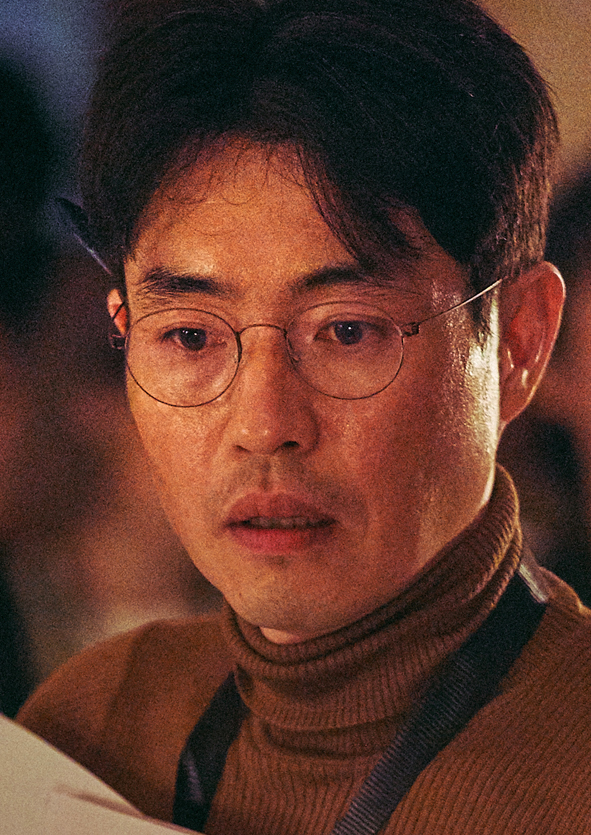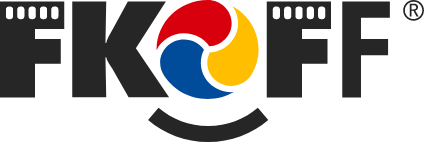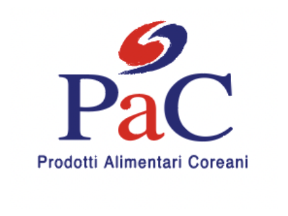Directors Archive / RYOO SEUNG-WAN

RYOO SEUNG-WAN

Name in korean:
류승완
Profession:
Regista
Date of Birth:
21 Febbraio 1973
Gender:
Uomo
Biography
Ryoo Seung-wan (classe 1973) può essere considerato il Tarantino coreano: cinefilo incallito, debutta con Die Bad (2000), in cui riunisce quattro episodi molto apprezzati di argomento simile (e in cui è presente anche il fratello Ryoo Seung-beom, tra gli attori coreani più talentuosi di oggi). Da allora, Ryoo si è fatto una solida reputazione come regista capace di conferire grande energia e creatività al cinema di azione e di genere. I suoi film sono stati presentati a Cannes (Crying Fist), Venezia (The City of Violence) e Berlino (The Unjust).
Nato nel 1973, Ryoo Seung-wan fin da bambino è affascinato dai film d’azione hongkonghesi. Al liceo per un anno intero salta il pranzo, mettendo da parte i soldi per comprare una cinepresa 8mm usata. Venendo da una famiglia di umili origini, non gli è permesso di studiare cinema. Nonostante ciò partecipa a diversi corsi e laboratori per diventare regista, senza mai abbandonare il suo sogno. Nel 1993 si rivolge a Park Chan-Wook, che ammirava profondamente, e così, sotto l’influenza di Park inizia ad appassionarsi sempre di più ai film di genere di serie B, in particolare all’horror degli anni ‘70. Partecipa alla produzione di “Threesome” come membro dello staff del reparto regia, lavorando poi nel film horror “Whispering Corridors”, facendo sempre più pratica del set. Girare questi film è per lui più che un apprendistato: conosce così molta gente del cinema, tra cui Kang Hye-Jeong, produttrice e sua attuale moglie. Le sue relazioni personali lo aiutano a realizzare il suo primo lungometraggio, “Die Bad” (2000), film a episodi alla cui produzione sono in molti a partecipare senza ricevere un compenso, colpiti soprattutto dalla grande passione di Ryoo per il suo lavoro. Questo piccolo film indipendente, portato a termine con pochi mezzi ma con grande determinazione, è considerato ancora oggi come un punto di svolta nella recente storia dell’industria cinematografica coreana.
Dopo aver completato “Dachimawa Lee”, che rende omaggio agli action movies coreani di serie B degli anni ‘60-’70, prepara il suo primo film commerciale, “No Blood No Tears” (2002), riunendo alcune vecchie glorie del passato e costruendo un entusiasmante film d’azione sulla ricerca di una borsa contente denaro. Grazie al suo progetto successivo “Arahan” (2004), il fratello Ryoo Seung-Beom - che già si era fatto notare per le sue qualità in “Die Bad” – diventa uno degli attori emergenti più importanti del cinema coreano. Il film racconta la storia di un timido poliziotto che lotta contro il male, salvando il mondo con il regista che mette da parte il realismo e si concentra sugli elementi più divertenti del genere. Al contrario, “Crying Fist” (2005), presentato al Festival di Cannes, esula dai confini di genere, esplorando la realtà in maniera profonda; il cast annovera Choi Min-Sik, uno dei principali attori coreani e ancora una volta Ryoo Seung-Beom; il film racconta l’esistenza di due uomini, la loro ascesa e il loro declino nel mondo della boxe. Nel 2006 realizza “City of Violence” (presentato alla Mostra di Venezia), un action-movie dai molti elementi noir e con innumerevoli riferimenti alla recente storia coreana e in cui lo stesso regista interpreta l’eroe, recitando al fianco di Jung Doo-Hong, maestro del cappa & spada coreano. Con i suoi ultimi film (a più alto budget e di grande successo) “The Unjust” (2010), “The Berlin File” (2013) e “Veteran” (2015), Ryoo ha saputo rinnovare il suo stile, che è diventato più maturo e calibrato, anche in funzione di una maggiore apertura un pubblico più internazionale.
Critique
Regista, sceneggiatore, attore, produttore, talent scout, (inguaribile) cinefilo. E la lista potrebbe continuare perché il talento poliedrico di Ryoo Seung-Wan sembra non conoscere limiti. Basta solo evocare il suo nome e la crescente platea dei suoi ammiratori (che lo riconosce come uno dei registi più influenti del cinema coreano contemporaneo) è pronta a osannarlo, e non solo perché Ryoo ha completamente ridefinito i confini di un genere, il film d’azione, che nell’industria coreana da sempre ha una parte da leone, ma anche perché la sua è anche la storia di un uomo che è stato capace di seguire un’innata passione e di trasformarla in una vera e propria vocazione di vita. Sono in molti ad aver scritto sul giovane ragazzino di umili origini affascinato dai film d’azione hongkonghesi che grazie alla sua perseveranza è riuscito a imporsi per ben tre lustri con un prodotto, il cosiddetto blockbuster d’autore, che ha soddisfatto i gusti dei cinefili più incalliti quanto quelli del grande pubblico. Per alcuni si tratta di straordinaria intelligenza creativa, per altri di malcelata furbizia. Forse la verità sta nel mezzo, o meglio, nel famigerato esprit du temp (semmai oggi ce ne fosse uno) di cui Ryoo si è fatto personale interprete.
Non è poi così difficile collocare il regista dentro quella New Wave (o Nouvelle vague) che ha fatto rifiorire l’industria coreana negli ultimi quindici anni. Nel suo cinema si ritrovano infatti molte delle idee che accomunano quella generazione di registi che ha riportato la Corea tra le grandi cinematografie internazionali, in particolare quel confronto con la tradizione dei generi (e una loro contaminazione), che non si è mai separata da uno sguardo lucido sulle trasformazioni della società coreana. Ryoo si muove lungo questa traccia, e anche se alcuni dei suoi film possono apparire dei puri e semplici prodotti d’intrattenimento, il più delle volte nascondono un’inquietudine di fondo molto palpabile. Ed è probabilmente questa la chiave per entrare dentro le sue storie.
Visto da questa prospettiva il cinema di Ryoo è sicuramente debitore, dall’esordio di “Die Bad” fino almeno a “City of Violence”, a quello del suo maestro e mentore Park Chan-Wook, per la cupezza sanguinaria, per l’idea di violenza come ineluttabile regolatore dei rapporti umani, per la fascinazione con cui viene utilizzata la citazione cinefila. Anche se i destini dei due hanno continuato a intrecciarsi negli anni (firmano due dei cinque episodi che compongono il film collettivo “If You Were Me”, e Ryoo è attore in due importanti film di Park, “Mr. Vendetta” e “Lady Vendetta”), tuttavia Ryoo ha sin dall’inizio mostrato il desiderio di affrancarsi da questo ingombrante modello, cercando di trovare una propria strada che da un certo tipo di immaginario fosse capace di costitursi in uno stile autonomo. Ed è stato sempre partendo dalle proprie passioni che Ryoo ha intrapreso questa forma di progressivo smarcamento: la cultura pop degli anni ‘70, dal fumetto ai film di genere (azione, cappa & spada e horror) di Hong Kong, passando per le vecchie serie televisive di serie B. E’ stato pescando a piene mani da questo passato - tornato prepotentemente in auge grazie alla riscoperta che ne ha fatto la cultura globale postmoderna a cavallo tra gli anni Novanta e i Duemila - che Ryoo è andato costruendo quell’approccio ironico e scanzonato che lo ha reso celebre e che costituisce ancora oggi l’elemento che più lo allontana da Park.
Non già tanto in “Die Bad”, film ancora troppo acerbo, ma pur ricco di interessanti spunti, quanto nel secondo lungometraggio, “No Blood No Tears”, che si capisce quanto sia importante per Ryoo tentare di tagliare i ponti con Park, cercando una sua strada. Rispetto al film d’esordio, in cui l’influenza di Park è fin troppo visibile (i personaggi si muovono ai margini di una società ottusamente “darwiniana”, dove l’obbligo dell’eccellenza e il mito del denaro dettano feroci regole a un’umanità sempre più sola, incattivita e priva di ogni speranza per il futuro e così sentimenti come la violenza, la sopraffazione, la vendetta diventano l’unico strumento per uscire fuori da una stagnante condizione di torpore esistenziale), la scrittura si fa più strutturata e accorta (l’escamotage della borsa è una bella intuizione “alla Soderbergh”), ma soprattutto c’è una forte accellerazione verso quegli elementi che d’ora in avanti costituiranno gli stilemi dello stile di Ryoo: le mirabolanti sequenze d’azione e gli innumerevoli momenti di humor, sempre funzionali a stemperare la tensione e a stuzzicare la curiosità del grande pubblico, all’interno di una cornice di genere (il thriller ad alta tensione), le cui figure archetipiche vengono continuamente ridefinite nella loro stessa mitologia. Di questo lavoro sul personaggio (in particolare quello del poliziotto/detective, un po’ eroe un po’ canaglia) sono testimonianza, ad esempio, due film per certi versi piuttosto simili, come “City of Violence” e “The Unjust”, in cui i protagonisti si muovono da autentici plot-driver per farci immergere in una realtà marcia, fatta di malcostume, corruzione, doppi giochi: una sorta di giungla sociale in cui bisogna saper stare al gioco, cercando di recitare fino in fondo il proprio ruolo (con “City of Violence” Ryoo torna a guardare a Park).
Tuttavia siamo pur sempre in un film di Ryoo e dunque la proverbiale ironia con cui il regista guarda i suoi “eroi” ha la stessa forza espressiva delle sue famigerate scene d’azione, che il regista coreano è capace di realizzare con una sensibilità e una sapienza spettacolare pressoché inarrivabili nel cinema coreano (e forse asiatico) di oggi. Eppure Ryoo non fa che recuperare la tradizione (montaggio serratissimo, continui cambiamenti dei punti di vista, fisicità degli attori, effetti speciali, musiche ecc.), seppure in una veste del tutto nuova, data appunto dalla volontà di mostrare il tutto come puro artificio. Questo sguardo, che svela una ben precisa idea di cinema, tende a mettere Ryoo dalla parte dello spettatore, che come lui, resta meravigliosamente stupito e affascinato dalla forza catartica del cinema. E’ soprattutto grazie a questo che i film di Ryoo sono così popolari presso il grande pubblico, perché il regista coreano – a differenza di molti suoi colleghi – non fa nulla per dissimulare il suo amore per gli elementi tipici dell’entertainment. Atteggiamento poco snob e molto fruttuso.
A fare in un certo senso da opposti estremi nella sua filmografia ci sono poi due film, che più diversi non potrebbero essere: “Arahan” (con accanto “Dachimawa Lee”, nella sua doppia versione, media e lunga) e “Crying Fist”, tanto per ribadire, se ce ne fosse bisogno, che il nostro ama mescolare le carte e soprattutto lasciarsi più porte aperte. Il primo è un puro divertissement, capace di spingersi ben oltre i limiti del semplice omaggio cinefilo, e presentandosi come il colorato tributo a un’indefinibile epopea pop-kitsch, capace di mettere insieme la tradizione del cappa & spada (ma l’ispirazione è quella di un vecchio fumetto coreano celebre negli anni ‘70), le suggestioni da commedia e certe sortite da sci-fiction, nonché l’infatuazione per grandi comics hollywoodiani come Hulk o Spiderman. Una specie di mix tra Jackie Chan, Ritorno al futuro e Matrix, per intendersi, oltre il quale Ryoo non si è più spinto, forse a ragion veduta. Dall’altra parte invece “Crying Fist” si presenta come un film “anomalo” nella filmografia del regista, per quel bagno di sano e palpabile realismo che molto è piaciuto alla critica, proprio perché inaspettato. A ben vedere tuttavia la storia di questi due pugili (uno più vecchio, l’altro più giovane) non è poi così dissimile da quella degli altri film, piuttosto lo scarto sta nel fatto che qui la rappresentazione della società coreana emerge con più forza perché si riducono gli elementi spettacolari tipici dei suoi action-movies, a favore di una messinscena volutamente più sobria, ma sempre ben strutturata in una cornice di genere (il poco frequentato box-movie). Ed è sempre in questo film che Ryoo non si risparmia nello sperimantare nuove soluzioni espressive, con la cinepresa che si muove nello spazio con inediti piani-sequenza (tutta la scena del secondo round del match-finale è in tal senso esemplare), elementi pressoché sconosciuti nel suo stile, che gli permettono anche di valorizzare le prove dei due attori protagonisti (un grandissimo Choi Min-Sik e un altrettanto convincente Ryoo Seung-Beom, fratello del regista, alla cui fama egli ha contribuito in maniera determinante). Non è forse peregrino ipotizzare che sia proprio “Crying Fist” il film in cui Ryoo tenta di fare il salto e cioè di confrontarsi con un cinema capace di creare dei cortocircuiti tra la dimensione psicologica dei personaggi e la struttura narrativa del film (pensiamo ai film di grandi autori americani come Martin Scorsese, Clint Eastwood e Robert Aldrich).
Su questa strada sembrano muoversi gli ultimi tre film del regista coreano, il già citato “The Unjust”, “The Berlin File” e “Veteran”, che hanno in comune, oltre all’esigenza - fin troppo visibile – di conquistare sempre di più un certo pubblico occidentale, anche una più strutturata attenzione ai personaggi e alle dinamiche che regolano i loro rapporti. Forse è proprio il primo (“The Unjust”) a rivelare questa sorta di nuovo corso del cinema di Ryoo: pur conservando gli elementi tipici del thriller, stempera non poco l’azione (e per un film di Ryoo è davvero sorprendente!), a favore di un realismo freddo e crudele, capace di contaminare ogni pensiero (e azione) dei personaggi, bloccati in una ragnatela di convenzioni da cui è praticamente impossibile sfuggire. Strada, questa, proseguita anche in “The Berlin File”, che a dispetto delle apparenze (sembra uno spy-movie da Guerra Fredda) dimostra una spiccata originalità: l’azione ha un ritmo veloce e dinamico, ma anche altamente realistico, elemento questo che la dilatata nei tempi e l’alleggerisce in termini d’intensità. Dei tre film, è l’ultimo, “Veteran”, quello più simile allo stile più conosciuto di Ryoo, rappresentando una sorta di passo indietro rispetto a quanto il regista coreano aveva fatto nelle due opere precedenti. Ma è l’eterno gioco del contenuto e della cornice, che tuttavia, visto da questa prospettiva, non può che offrire numerose varianti, da modellare e rimodellare a proprio piacimento. L’ennesima prova, probabilmente, di ciò che una volta disse lo stesso Ryoo, e cioè che «i film vengono prima dei generi».




